"Hiding in plain sight": Young Australians spending beyond their paycheck
Published: Friday, 17 May
Reporters: Yasmine Alwakal, Bailey Angus, Chloe Clarke and Ella Garrett
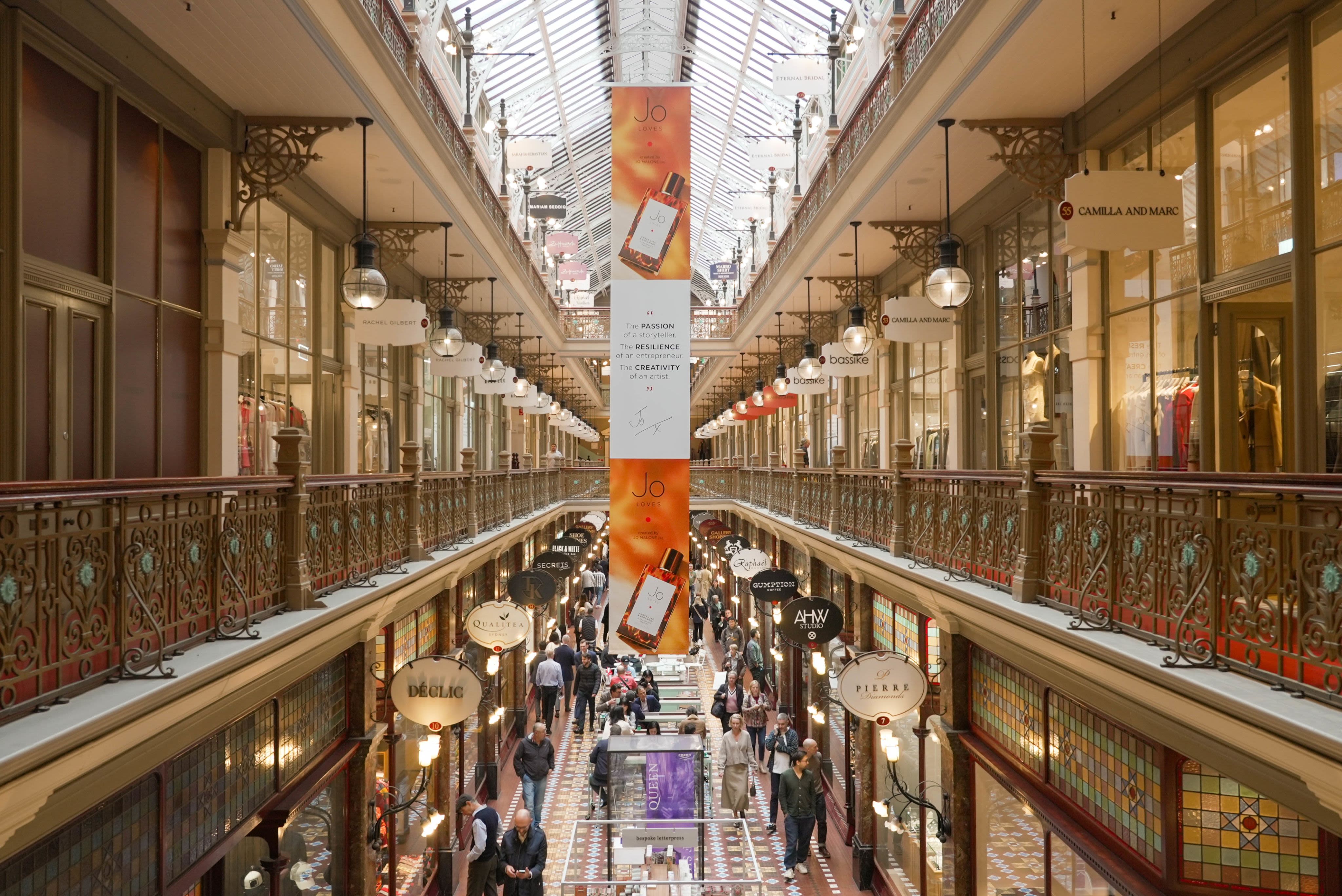
As 'buy now, pay later' and gambling debts in Australia reach record highs - are younger demographics more at risk for financial negligence?
Self-proclaimed shopping addict, Grace Higgins doesn’t like to look at her bank balance.
This reality has allowed a steady stream of parcels; everything from leather jackets to activewear, skincare and haircare products to arrive at her doorstep.
She estimates to have amassed $20,000 in online shopping purchases. These orders didn’t put an immediate dent in Higgin’s bank account, rather could be paid back over four interest-free instalments thanks to ‘buy now, pay later’ (BNPL) services like Afterpay, Zip or Paypal.
According to the Reserve Bank of Australia, Higgin’s is not alone, with almost one third of Australian adults having used BNPL in the past year and services experiencing an 8% surge since 2019.
Working as a Finance Graduate, Higgins admits:
“I’m not great with the whole concept of delayed gratification, so I don’t like waiting for things. I like having them when I see it.”
“If I was trying to buy something really expensive, which I couldn’t afford because I only got paid fortnightly and [BNPL] was advertised on the website…it just seemed like it made more sense to pay fortnightly…Then I could buy the item then and there.”
But often, these lending services are used to pay for essentials.
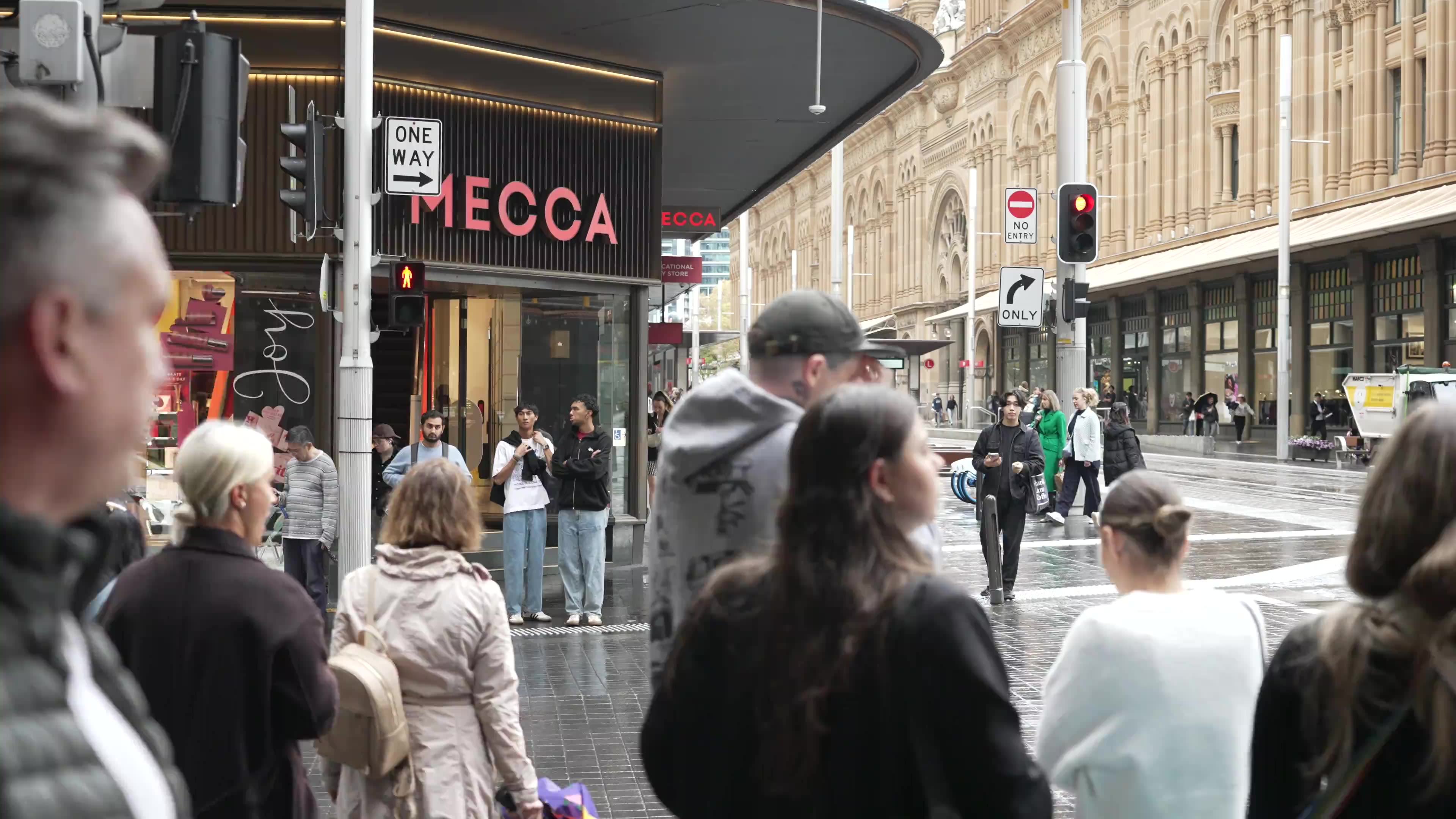
Quick to buy, late to pay
In a recent Financial Counselling Australia report, 32% of Australians commonly use BNPL for utility bills including gas and electricity. Almost half said they used it to pay for petrol. And with rising cost-of-living pressures, 71% of consumers reported using BNPL to fund food and grocery shopping.
Jason Collins, who heads the Masters of Behavioural Economics at the University of Technology Sydney and managed the Consumer Insights team at the Australian Securities and Investments Commission (ASIC) has witnessed this change:
“It’s interesting, for young people, credit cards are now basically dead. ‘Buy now, pay later’ services have replaced them.”
Unlike credit services, which are categorised by the National Consumer Credit Protection Act as providing loans in exchange for a small fee paid by customers, BNPL can be marketed as “interest free”. Retailers pay the cost on transactions. Consumers only need to contribute extra if they fail to make repayments on time.
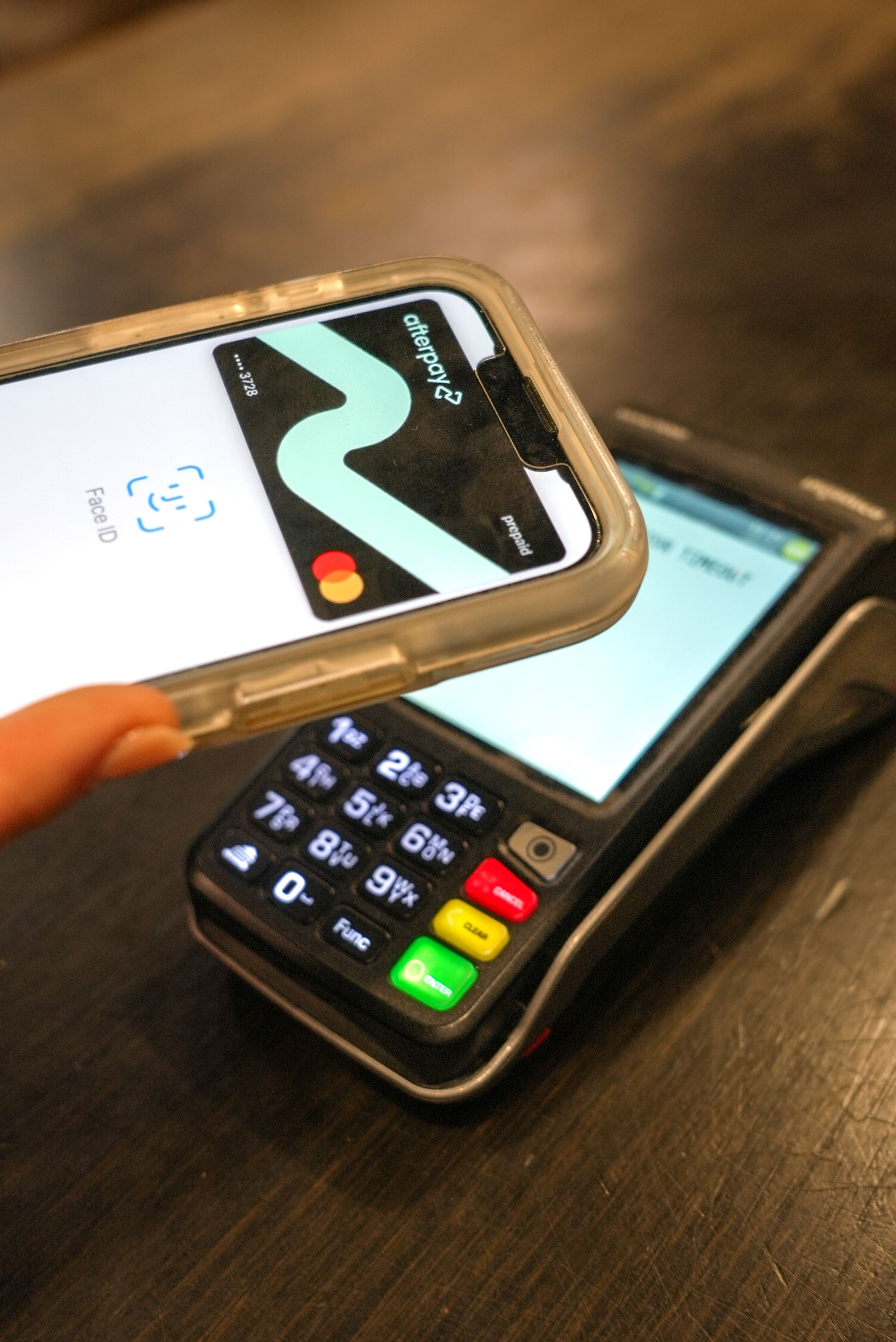
Many stores which previously offered BNPL for online transactions have made the switch to services like Afterpay for their in-store shoppers.
Many stores which previously offered BNPL for online transactions have made the switch to services like Afterpay for their in-store shoppers.
Michael Witkowski, a Senior Hatter from Strand Hatters, one of Australia’s oldest boutique hat stores in the heart of Sydney’s central business district, is just one of a growing number of Australian vendors who offer alternative payment services for their customers.
“As a retailer, payment options for customers are important. And what’s interesting is before we had BNPL…when we only offered it online…people went out of their way to ask if we accepted Afterpay. So it seemed like a natural progression to offer this service.”
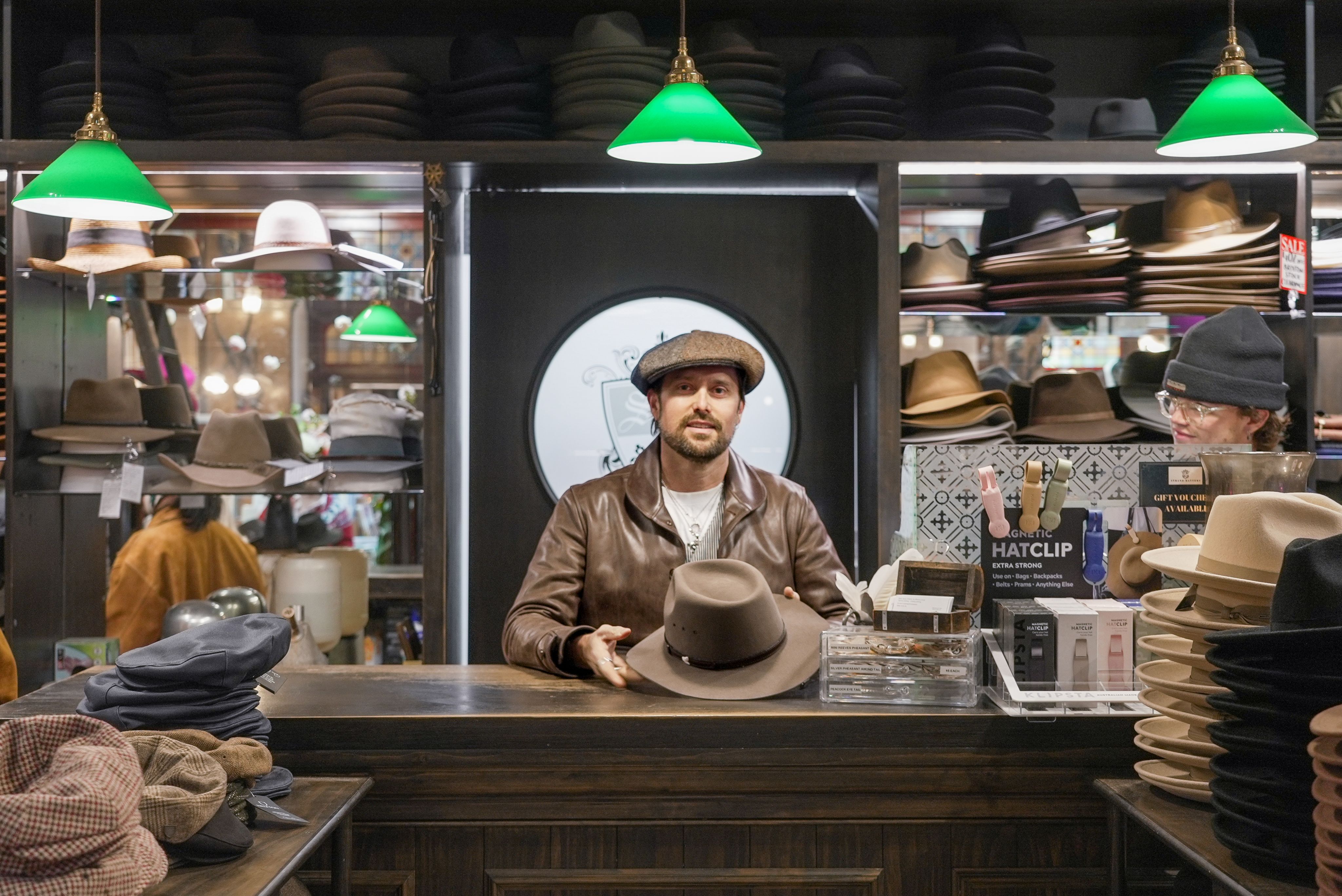
While Afterpay is not the most popular in-store payment option at Strand Hatters, Witkowski does believe,
“Financial security is a huge issue for people. I feel like a lot of vendors are targeting vulnerable people, young people as well, so I think 100% there should be more regulation around it.
“But in terms of selling hats, it’s a good thing.”
With rising cost of living pressures, BNPL services offers an additional and often attractive payment model for customers.
With rising cost of living pressures, BNPL services offers an additional and often attractive payment model for customers.
Even Okanui, a small surf and swimwear brand in Sydney’s northern beaches advertises Afterpay as an option in store.
"Afterpay has only been an option for just over 12 months in our stores. It is another form of credit and it has its place in the market.
"I feel it is being targeted to ages 18-40 as this demographic is [often] technology savvy." says Regional Retail Manager, Jo Phillips.
But when one in four BNPL customers have missed their payments and 95% of users feel worse off than before - grappling with growing debts and cutting back on essentials to make repayments according to the Small Loans, Big Problems report - is BNPL promoting irresponsible spending?
Risk versus reward
For Greg Ovens, who watched his daughter Claire Ovens develop a compulsion to shop at just twelve years old and before the emergence of BNPL services, he remembers the financial burden of acting as an “ATM”, or “Bank of Mum and Dad”.
“Because in those earlier years... [Claire] would put her hand out saying ‘Oh can I have money for this?’, ‘can I have money for that?'..."
“I'd say well no, you don't and you’ve already got, you know, shoes and handbags and jumpers and, and all that sort of stuff. So, you already have plenty now you just want more and you don’t need more because, because you don't need more and it costs too much. So, it was a frequent conversation.”
Now working in the fashion industry, Claire Ovens views shopping as a form of self-expression and while she feels her relationship with online shopping has improved,
“I’ve definitely regretted purchases. I feel like sometimes when I buy one thing, it unlocks the floodgates, and then I end up doing a whole lot more purchasing and then often i’m left feeling quite guilty afterwards that I went so crazy and spent so much.”
Ovens is known to embark on self-imposed “spending bans” for up to three months. She also estimates to have spent close to $2,000 in the past week on non-essential clothing (and that’s with a staff discount).
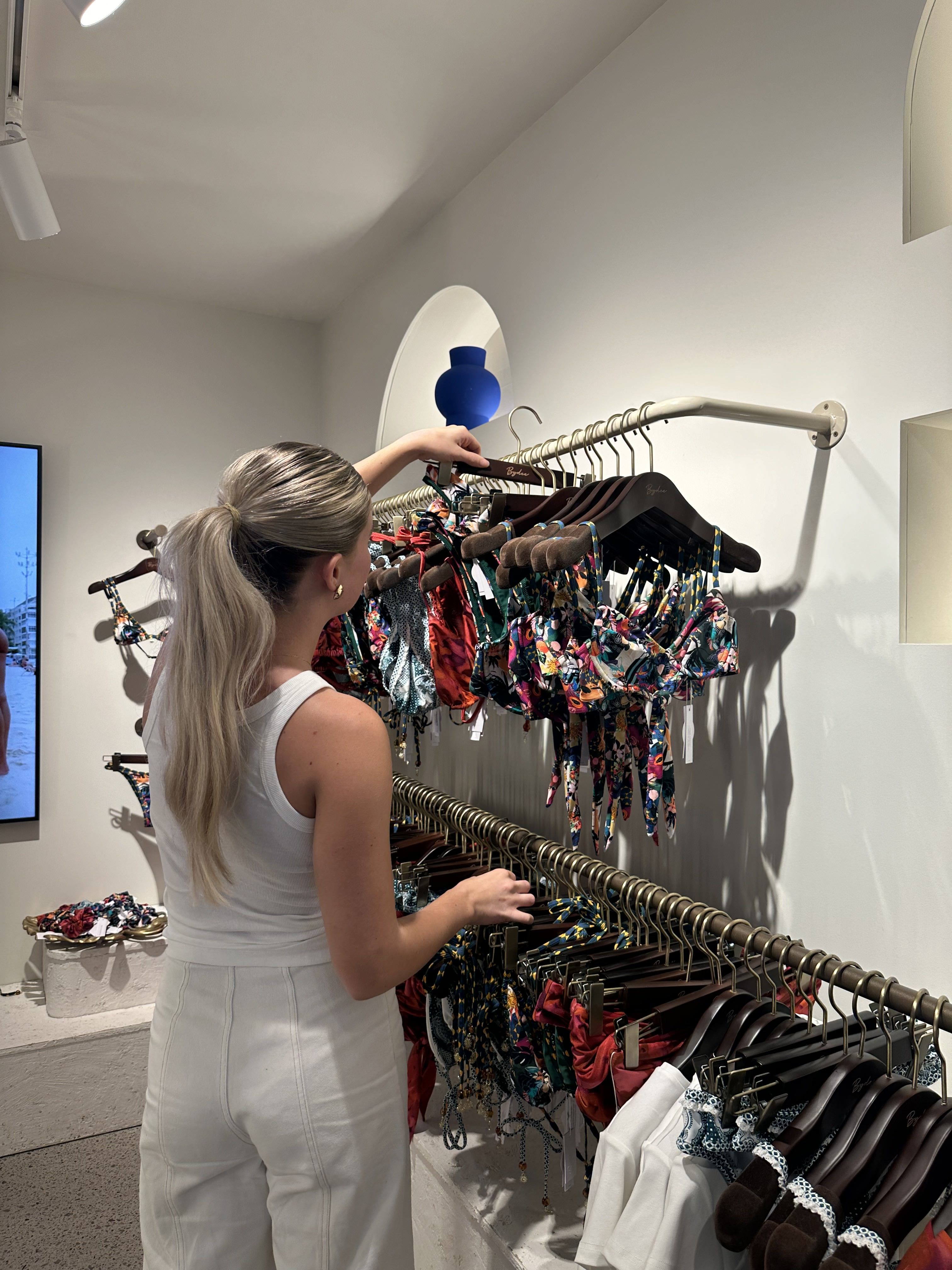
At her new job, and wearing her newly purchased clothing, Ovens' world is entangled in the fashion industry.
At her new job, and wearing her newly purchased clothing, Ovens' world is entangled in the fashion industry.
The convergence of targeted online advertisements with social media trends like Little Treat Culture or #girlmath on TikTok can often justify high purchases and overspending behaviours for many young Australians.
TikToker, Samantha Jane, from whom the term “girl math” originated, has coined the concept as “fun logic”. According to Jane and 230 million TikTok users, purchases under $5 feel free. Returning an item means you're actually making money. If you buy a $50 shirt and wear it 50 times, it’s only $1 per use.
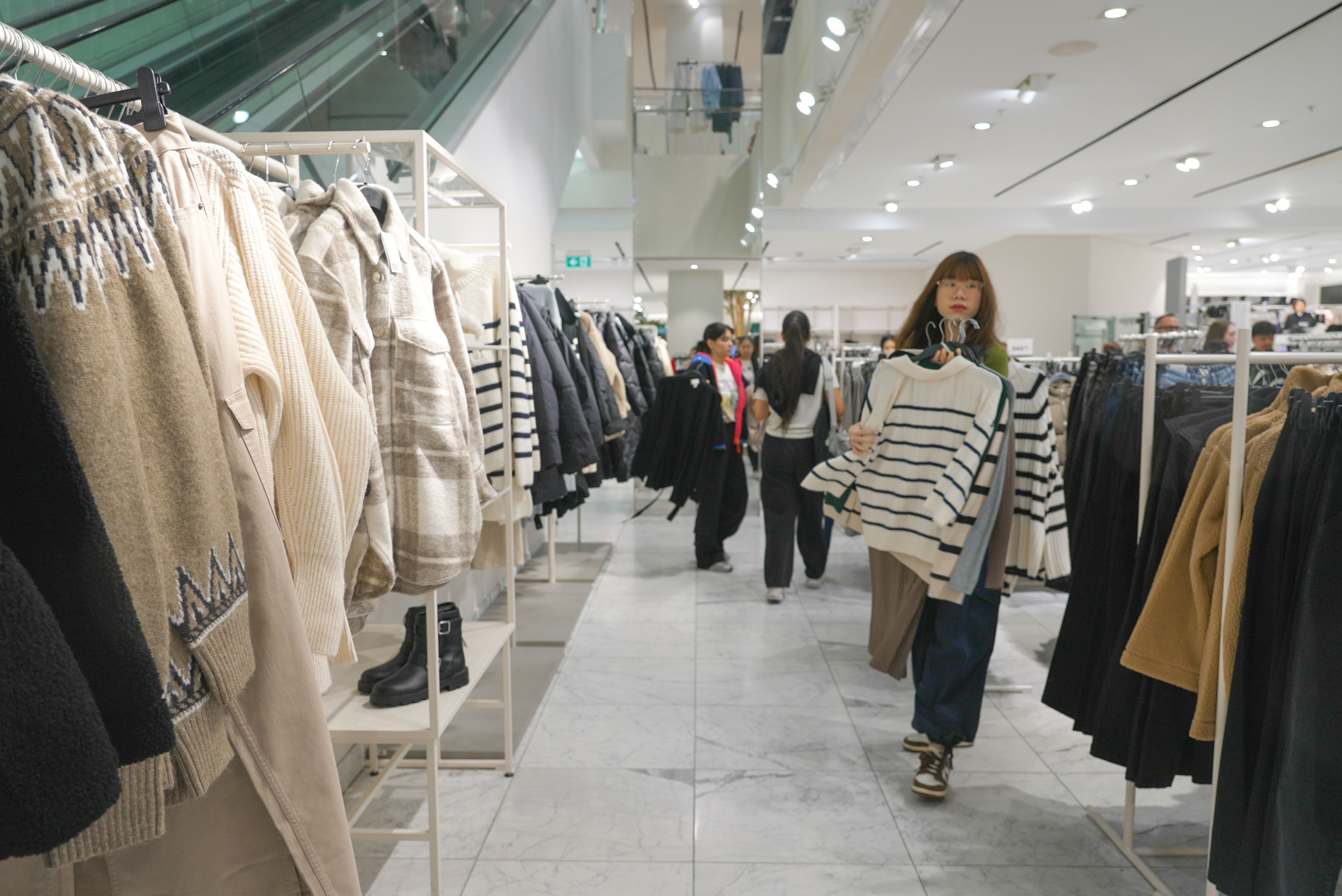
That’s why Ovens believes:
“With social media these days, you are always being sold a new product. You are constantly looking at influencers, celebrities and even people within your immediate and greater social circle, so there is always that pressure to keep up with trends. Make sure you are always wearing the newest thing.”
Almost every online shopping website Ovens clicks on includes a BNPL advertisement. Email marketing routinely promotes binge spending events including Afterpay Day, Click Frenzy, End of Financial Year and Black Friday sales. For years, Afterpay was so deeply entrenched in the industry it sponsored fashion week. Or as it came to be known, Afterpay Australian Fashion Week.
Recent Afterpay video advertisements have become so all encompassing they target tennis fans, and Honda CRV driving suburban families, feature mythical trolls to celebrities in their promotional campaigns.
As Rebel Wilson explained, while holding a stuffed toy and miniature horse, to a young girl wearing a sparkling tiara, Afterpay is,
“If credit cards and cash had a baby, you could pay over time without ever, ever, ever paying interest!”
While BNPL services have been under close scrutiny, with changes to the Australian Credit Act set to improve dispute resolutions, product disclosure and impose credit-check requirements which assess financial history and capacity before lending - these regulatory reforms have not yet been implemented.
Still, up to 27% of young Australians aged 18-24 report using BNPL, comprising some of the highest users for these services. Almost half of all patrons earn an annual income of less than $40,000.
A study by the Queensland University of Technology also revealed females aged 18-25 years use BNPL services instead of saving.
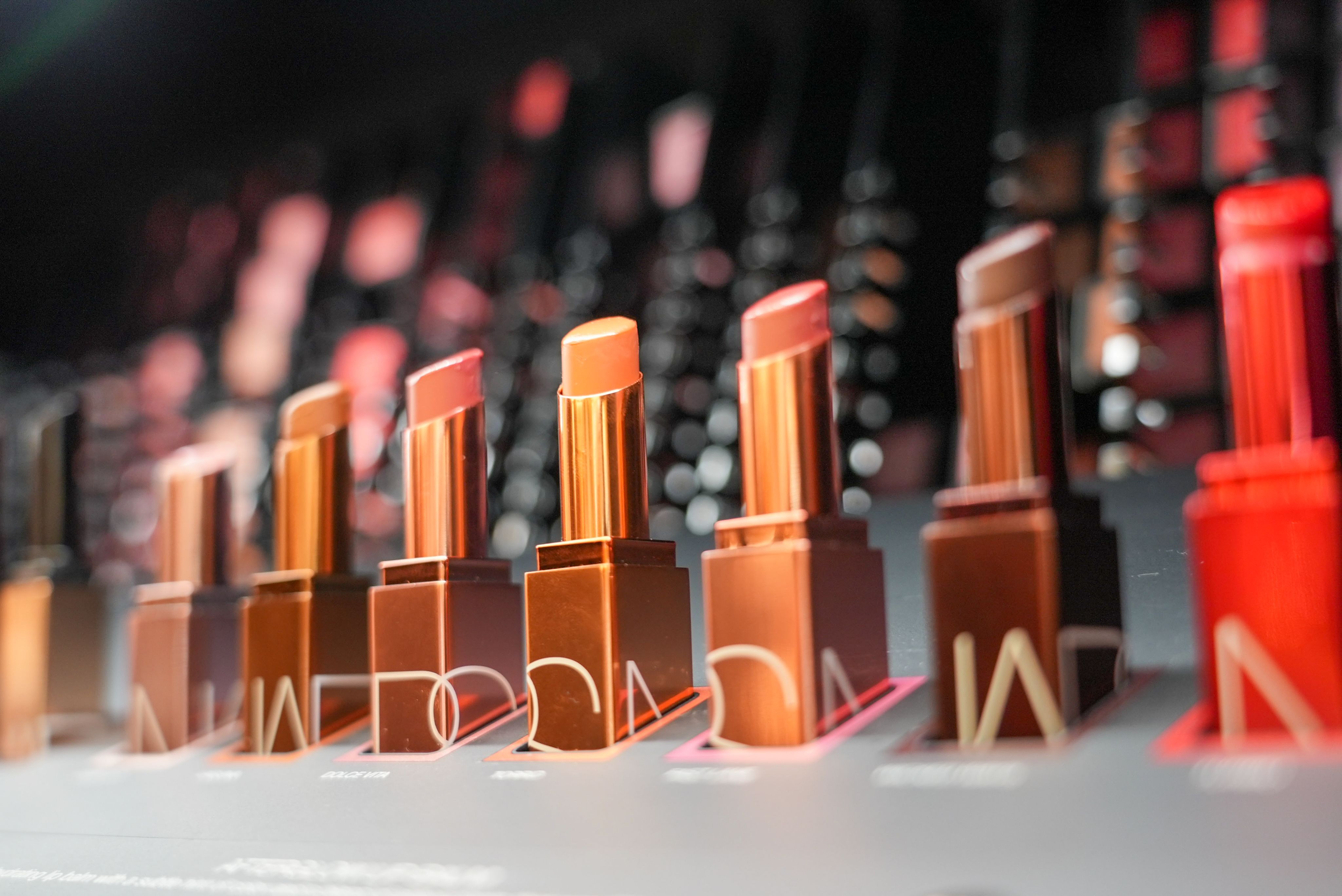
The Lipstick Theory
Collins, from the University of Technology Sydney does not find this surprising. He says consumers shift their spending, as explained by the “lipstick theory” in times of crisis or recession.
“The basic idea is that in times of economic stress, some people increase the purchase of luxury goods, particularly small goods.
“Post 9/11 [September 11 attacks] was one time where lipstick sales went up…and then there is the psychology under that.”
Collins says it’s more than just a changing income, the very psychology behind spending behaviours also change.
And while the Australian Bureau of Statistics have reported month-on-month retail turnover in Australia is declining, cult beauty behemoth Mecca Australia is on the rise, estimated to generate over one billion dollars revenue this year.
Spending on alcohol, particularly ready-to-drink beverages is also above pandemic highs, with over 14 million Australians, over two-thirds of the adult population consuming alcohol as of September 2023.
“The whole purpose of the cash rate going up is so that we spend more money, that’s why they [the Reserve Bank of Australia] do it.
“Are lipstick purchases an indication of whether people are generally uncertain…or aren’t feeling great? I’m not sure…”
But Collins is confident that “young people definitely suffer more.”
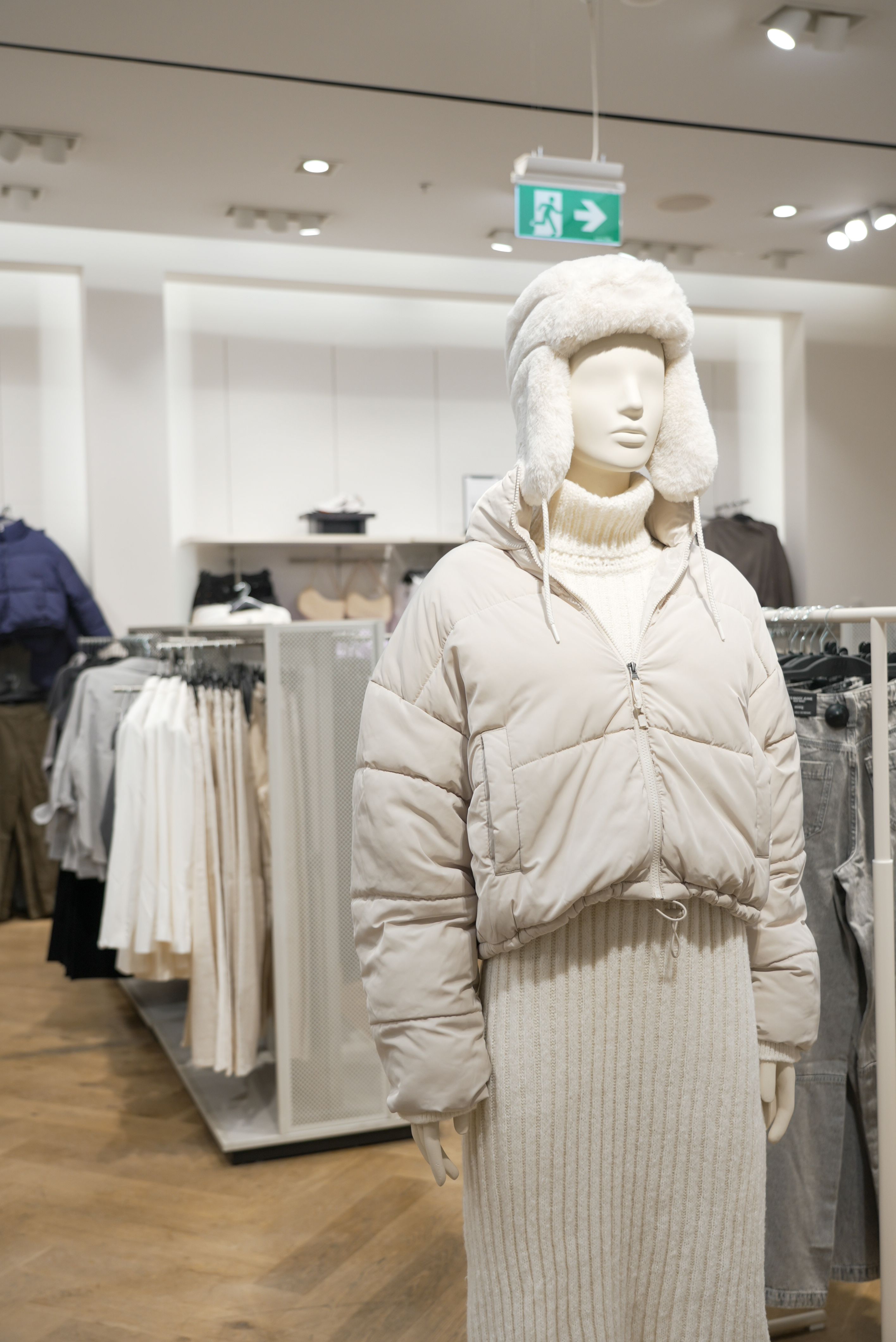
For many Australians who suffer from compulsive shopping disorders, it can be difficult to reach out and find help.
For many Australians who suffer from compulsive shopping disorders, it can be difficult to reach out and find help.
For Higgins, the ease and convenience of BNPL services make it an attractive option for younger Australians with unsteady paychecks.
For Higgins, the ease and convenience of BNPL services make it an attractive option for younger Australians with unsteady paychecks.
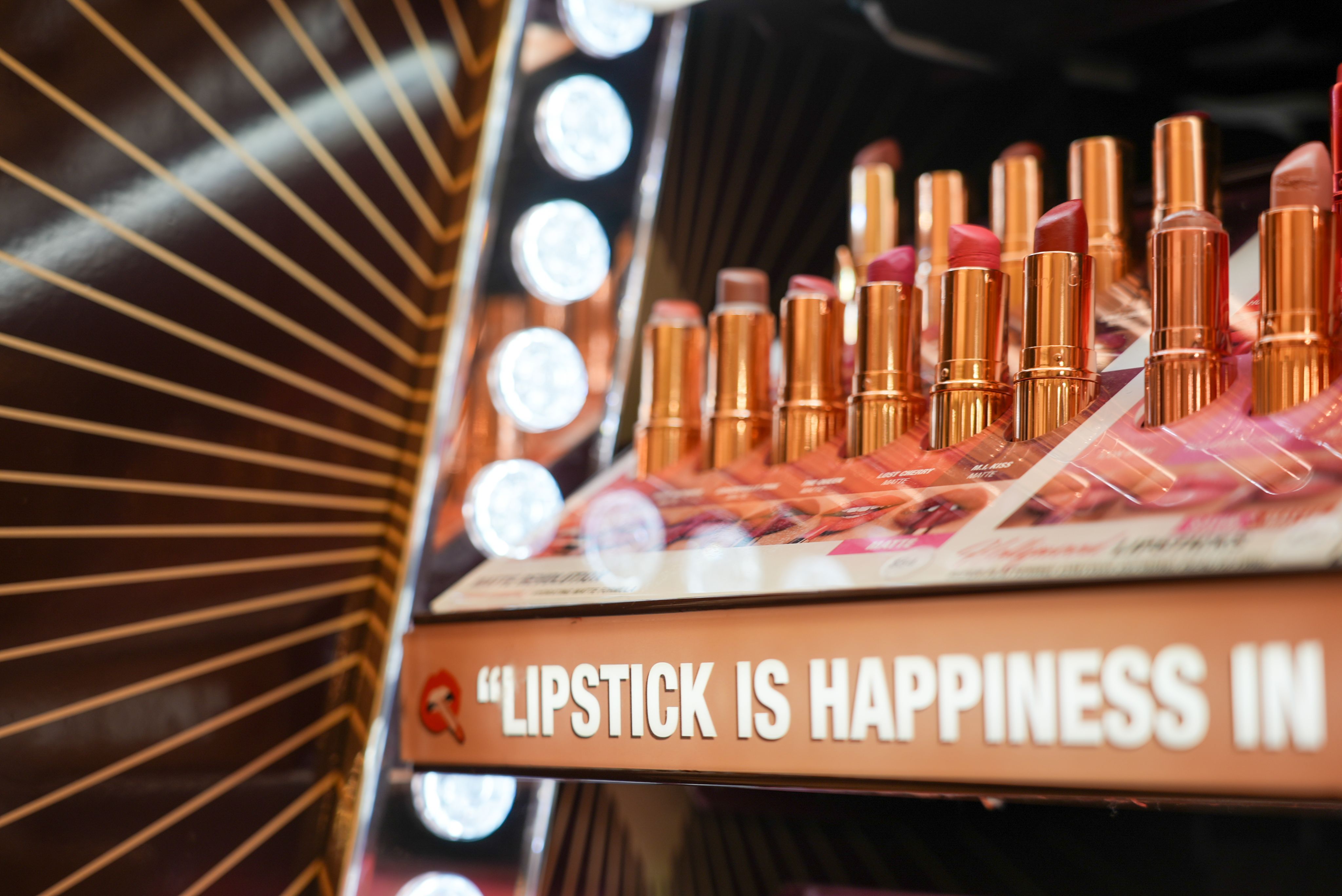
At the flagship Mecca Sydney store, lipstick is sold as "happiness in happiness in a tube!"
At the flagship Mecca Sydney store, lipstick is sold as "happiness in happiness in a tube!"
Unlike addictions including alcohol, gambling and tobacco, Australia has limited resources for people suffering from compulsive shopping or spending addictions. However, United Kingdom based charity, The Living Room, are committed to helping adults gain control over their behavioural addictions halfway across the globe.
Rita Copper, Operations Director and Deputy CEO has witnessed how often hidden addictions, including uncontrolled spending can affect people from all walks of life.
“Our support extends beyond just the individual clients; we also provide assistance to families and carers, recognising the importance of a holistic approach to charity.”
While Cooper has not observed a significant increase in new referrals due to BNPL services,
“Through our free group therapy sessions, we utilise a variety of therapeutic approaches tailored to meet the diverse needs of our clients. These approaches include psycho-dynamic therapy, psychotherapeutic techniques, Cognitive Behavioural Therapy (CBT), and person-centred methods.”
From credit cards to casinos and computers...
Overspending addictions, in all forms, target the same pleasure centres in the brain.
Chris Darwin, a Registered Nurse and Team Coordinator at Alfred Health’s Gambling Minds mental health and gambling harm service in Victoria believes:
“Gambling is a very convenient pull on any sort of difficulty or emotion. The cost of living crisis has really pushed people to their limits in terms of finances, so people are more desperate, or taking more risks to try and get money.
“For people who might be lonely or disconnected, pokies venues can provide a space to connect with people…Some people, if they are feeling low, also want to feel excited, so the lights, the sounds, can stimulate them.”
If people are highly wired and stressed, they can use gambling to ‘come down’ or zone out.
“Gambling is a way of escaping the world. It is incredibly scary how conveniently it can seep into an individual's life.”
From the Victorian Responsible Gambling Foundation, to the Australian Gambling Research Centre and New South Wales GambleAware, gambling, unlike shopping addictions, have a growing body of research in Australia. While the public discourse and awareness for gambling is shifting, Darwin admits before he started his current role, he was naive to how much harm it caused.
He says people suffering from gambling addictions are often seen to be impulsive, or irresponsible with their money. But it’s much more complicated than that.
The Australian Greens political party describes New South Wales (NSW) as “addicted to poker machines.” NSW loses more money per person to gambling than any other jurisdiction in the world.
Riley Rodewald, a Bar Assistant at a suburban Sydney licenced hotel reiterates “NSW has more slot machines than any other jurisdiction on the planet. Second only, to Las Vegas.”
Source: Australian Institute of Health and Welfare
At Rodewald’s workplace, it is well known that the pokies are funding the employees wages. Each machine brings in $120,000 worth of profit. With 30 machines, that equates to approximately $3.6 million profit, which doesn’t account for the money that gamblers also make.
While venues cannot advertise using the word “pokies”, terms like “VIP lounge” or “VIP room” are well known euphemisms. Legally, slot machines cannot be visible through windows or open doors and ATM machines, which are specially built so people can’t access credit accounts, aren’t allowed inside gambling rooms. But that doesn’t stop ATM machines being jammed right up next to the door. Doesn’t stop generations of gambling habits being passed down, Rodewald says.
“My assumption is that the boys who are playing, their dads, cousins or older friends have shown them how to gamble.
“With younger boys especially, you will see one or two people who are confident…sitting behind a betting machine and others who are watching him press the button and put money in. They haven’t really decided whether they want to fully participate. But they want to see what gambling is about and want to be with their friends, participating somehow.”
For Charles Mowbray, a third year Carpenter, this sort of behaviour is inevitable.
“Hanging out with certain groups of friends, it’s [gambling] a form of socialisation. When we all go out to the pub on a Friday or Saturday night, it's not just a beer and a bit of footy - someone always says ‘Who wants to go put a 50 on?’”
The rise of online gambling, encompassing sports wagering, fantasy sports, online lotteries and mobile casino games means gambling is “hiding in plain sight”. Darwin explains:
“It would be very difficult to participate with lots of other addictions in public. Whereas, I could be talking to you while having a gambling site on my computer screen. I could go to the bathroom at work and put a few bets on.
“There’s events going on all around the world at any point. We’ve had stories where people are betting on obscure sports in Poland, they’ve got no interest in, they’ve never heard of it. It’s just something to bet on.”
Anytime, anywhere: gambling and young people
According to the latest NSW Government Gambling Survey people aged 18-24 years are twice as likely as the state average to experience moderate risk and problem gambling behaviours.
It is not unusual for Mowbray to see gambling while out socialising.
“ I’ve seen so many mates scroll through their Facebook feed and pokies winnings, one after the other. Some who are bad have the pokies game on their phone, without betting real [physical] money.
“There are so many people my age. Some know where to draw the line, but…you hear stories of people at the [Hotel] Steyne on a Wednesday night and they have won $3000, but were out of pocket $4000 by the time they won that money. It might take someone my age half a year to save that kind of money.”
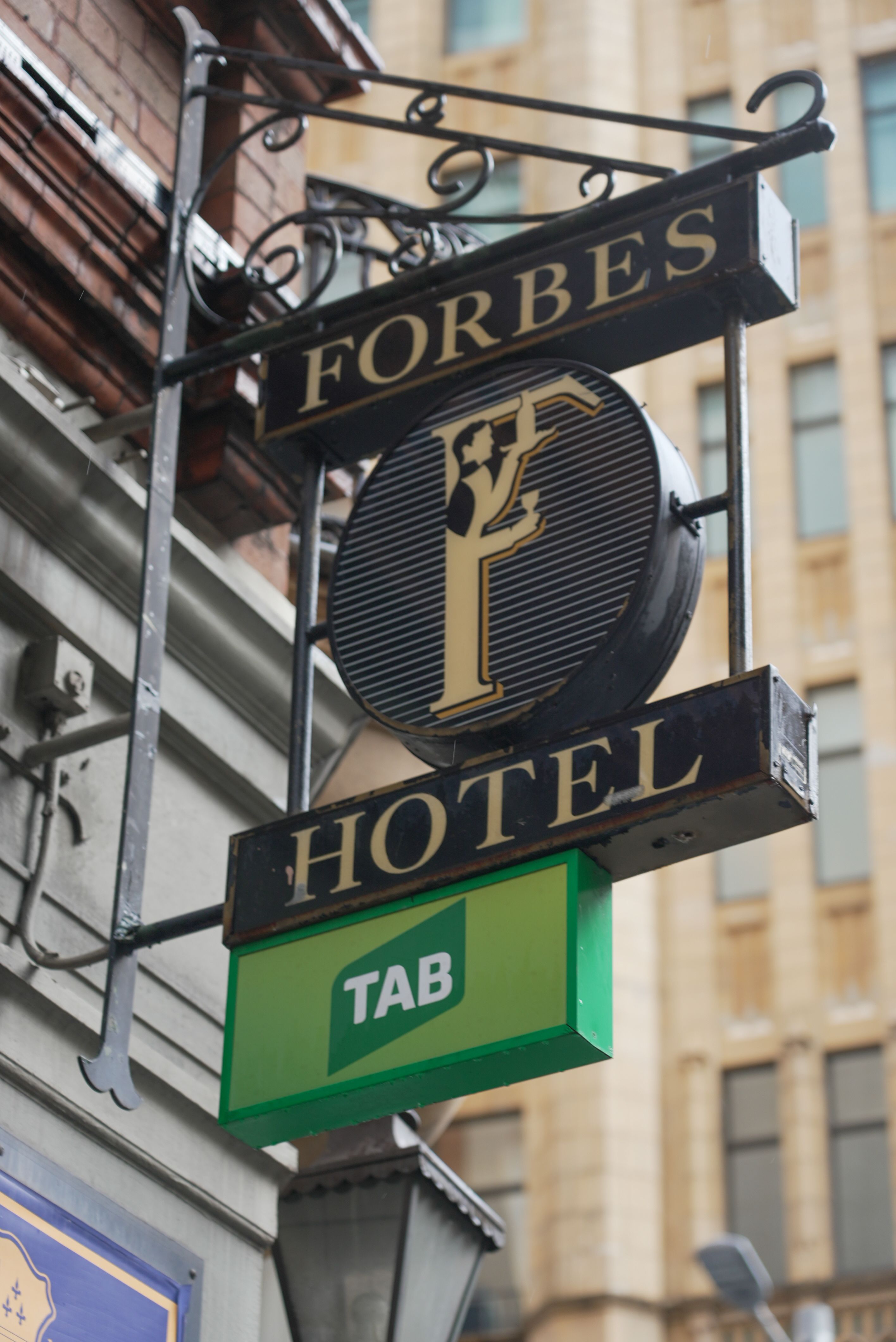
Forbes Hotel, Sydney CBD
Forbes Hotel, Sydney CBD
In 2020, Sportsbet allocated $139 million towards advertising and sponsorship, a figure that positioned the company alongside Harvey Norman, Coles and the federal government. Among the top five marketing spenders in the country.
Like the prevalence of BNPL advertisements, Mowbray says,
“You can’t watch a game of footy without seeing a Sportsbet ad. For example, you go to the Diggers [Freshwater pub], sit down and see 40 TV’s around you each playing different sports.”
Another key challenge is what Darwin dubs as gambling “grey areas”.
“Things that aren’t defined as gambling under many laws and legislations across the world…but are gambling in all senses of the word. They are loopholes.”
For young boys, video games which allow gamers to trade virtual items known as “skins” or “loot boxes” for currency and can then be sold for real cash, foster gambling and over spending behaviours. The NSW Youth Gambling Study reports that 40% of all young people play video games which comprise harmful gambling components.
In Australia, more than 16% of all gamblers are underage. Adolescents between 16-17 years. According to the 2022 Australian Secondary School Alcohol and Drug Survey, more than one in three children aged between 12-17 admit to engaging in recognised gambling activities at some point.
Source: REUTERS (Loren Elliot)
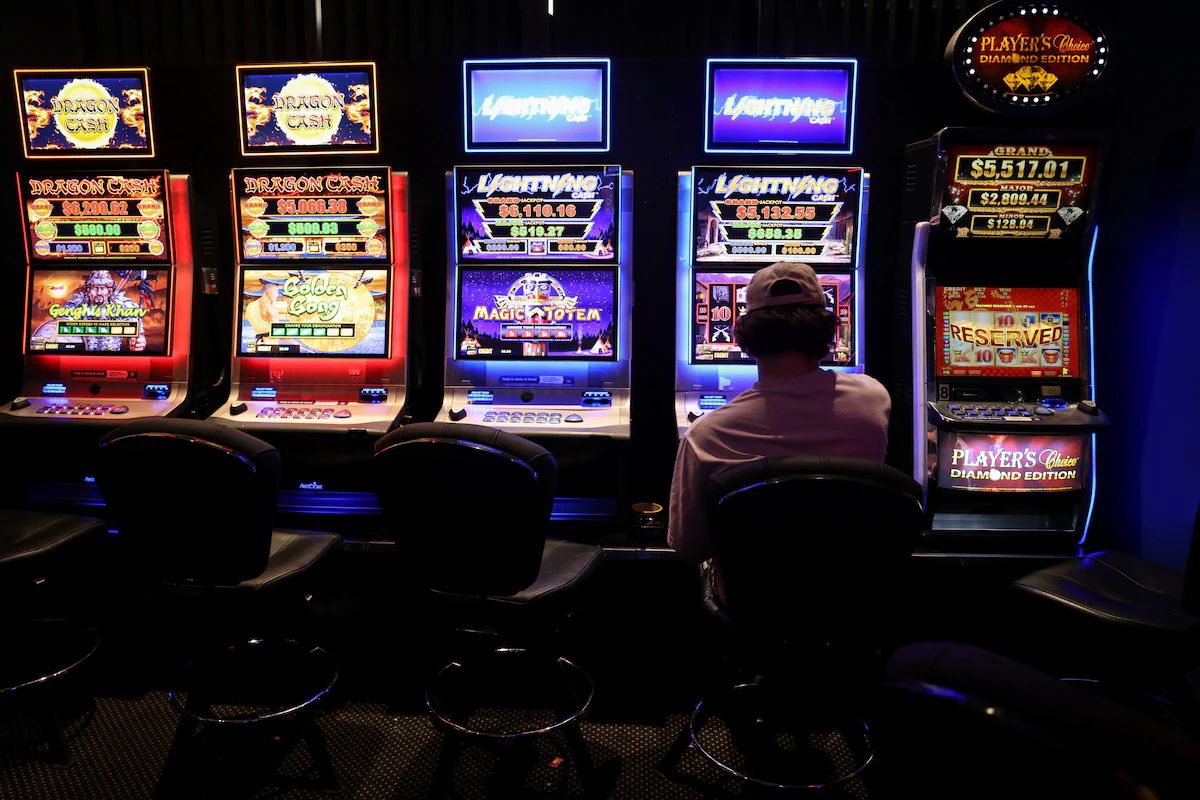
Kate da Costa, the Campaign Lead at Wesley Mission, a Christian community organisation which offers gambling counselling has experienced an interesting phenomena.
While “we do think that gambling intensity is increasing…it appears that the number of people gambling is falling slightly. It is also probable that online gambling is growing in terms of participation and losses, although the data is very poorly published.
“We still have large gaps in NSW of course. We do not know the amount of harm being caused by gambling in NSW, so we have to rely on the now quite old report from Victoria on the social cost of gambling.”
This research, by the Victorian Responsible Gambling Foundation quantifies the cost of gambling as over seven billion dollars for both individuals and regulatory bodies.
With more and more Australians chasing the “mythical win” of gambling, coupled with the globalisation of online sports betting in the United States, Darwin believes the potential for private companies to make money is higher than ever.
“We are only going to see an influx I believe…and younger populations really are the future of gambling, so they [gambling companies] want to get them hooked as soon as they can.”
The Australian government’s National Consumer Protection Framework for Online Wagering currently outlines measures for stronger consumer protections for online gambling. But according to Darwin,
“Often, it is people who have been in the industry for a long time who make the changes, and while they do have a huge amount of knowledge, we very quickly get aged out of technology. It moves so quickly I think we are often slow at catching up.
Across both retail, casino and gambling industries, private companies are betting on young people to get hooked as their future consumers.
But with home ownership becoming a pipe dream for many Australians, the average tertiary student racking up more than $25,000 in Higher Education Contribution Schemes (HECS) debt and 90% of young people experiencing financial difficulty annually - Darwin believes young people need to be included in the discussion.
“While it takes a lot of investment to be responsive and a lot of services try their hardest to engage youth…we need to listen to young people and their stories around how they have been affected. That is the only way to move forward.
“To develop services and treatments that are actually useful for that cohort.”